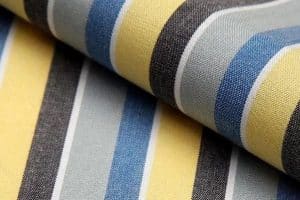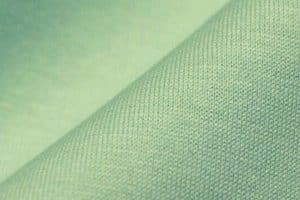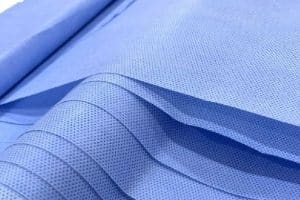Do you have an idea about the fabric! What is Fabric? or What do you mean by fabric? How is fabric made?
In this article, we will find out via this textile fabric details.
Table of Contents
What is fabric?
Fabric is the sheet, manufactured from weaving or interloping of yarn obtained in different ways. Such as pulling a series of threads and creating a series of foreign yarns by right angles to each other or by forming loops side by side. Now time to talk about textile fabric details.

Fabric Details:
Let’s learn about different types of fabric details. There are different types of fabrics that we use in our daily life. The textile fabric can classify into 4 details portions:
1. Woven fabric:

Woven fabric is made by interlacing with the help of pulled and foreign yarn. In simple words, the fabric is produced by the interlacement of two sets of warp and weft yarn is called woven fabric.
There are three types of woven fabric. These are as:
- Plain
- Twill
- Satin
Woven fabrics include poplin, satin, voile, twill, canvas, flannel, georgette, khadi, muslin, and Kashmiri. Besides these, there are other types of fabrics popular as Woven fabrics. The next part of the textile fabric details is about knit fabric.
2. Knit fabric:

Knit fabric is made by interloping a single set of yarn or thread.
Single Jersey, All Over Print, One Ian Dyed, Gray Melange Single Jersey, Terry Jersey, Fleece Fabric, Rib, PK or Lacoste, Lycra Single Jersey, Lycra Rib, Mesh Fabric, Interlock Fabric, Slub Fabric are perfect Knit fabric examples. Recently, many other types of fabrics have been included in Knit Fabric.
3. Non-Woven Fabric:

Non-Woven fabric does not belong to Woven or knit fabric. Any interlacing or inter-looping does not make Non-woven fabrics. It is attached as a result of some special kind of chemical or glue mixture. We are using this type of fabric in various daily activities.
Surgical masks are an excellent example of Non-Woven fabrics. Also included are baby diapers, sanitary napkins, coffee bags, tablecloths, and aprons Non-Woven fabrics.
4. Braided fabric:

Braided Fabric is made of three or more yarns known. This means that Braided fabrics are manufactured by twisting more than three yarns. The cap we use on the head is usually made of Braided fabrics. Also, handbags, lace belts, etc., are examples of Braided fabric.
How is fabric made?
Fabric production is divided into three parts. The first of these is yarn production. In this process, the raw fiber is converted into yarn and thread. Then this process goes through spinning. Earlier, spinning was done by hand. It took more time and effort. But now, with the advantage of the spinning wheel, the spinning could complete very quickly.
The spinning wheel collects the yarns in a cylindrical object called a bobbin. After that, these bobbins are transferred to another machine. After the raw materials are converted into yarn, it is ready for the second step. Here, the threads joined together to form the fabric.

Weaving done on a machine is known as a loom requires two sets. The first set is called a warp set, which strings the yarn into a metal frame. The second is called Weft, which holds the yarn attached to the rods, each with a thread. Today the loom is controlled by a computer that’s tells Weft how to weave the fabric. Once the fabric is knitted, it is removed from the loom. It is a very ancient method that has a different kind of beauty. Till it has a lot of popularity in today’s world.
At this stage, it is called Greg. This time, the fabric looks like a shiny white sheet, which remains colorless. It is then cleaned with bleach. Various chemicals and cleaners are also used to remove oil, wax, and unique ingredients present in the fiber. Then it goes for the dyeing. After that, it will ship to clothing manufacturers. Knitting and crocheting is another process of manufacturing fabric. We will definitely update you about this.
Types of Fabric and Fabric Manufacturing Process
After knowing about textile fabric, the thing that comes to your mind is the Apparel production process. Read through via this like and Stay with Textile Details.

magnificent issues altogether, you just received a emblem new reader.
What may you recommend about your submit that you
just made some days ago? Any certain?